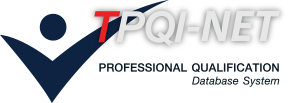หน่วยสมรรถนะ
Perform basic hand skills, standard trade practices and fundamentals in aviation.
สาขาวิชาชีพการบิน
รายละเอียดหน่วยสมรรถนะ
| 1. รหัสหน่วยสมรรถนะ | AVT-FTN-3-016ZA |
| 2. ชื่อหน่วยสมรรถนะ | Perform basic hand skills, standard trade practices and fundamentals in aviation. |
| 3. ทบทวนครั้งที่ | - / - |
| 4. สร้างใหม่ |
|
ปรับปรุง |
|
| 5. สำหรับชื่ออาชีพและรหัสอาชีพ (Occupational Classification) | |
|
101 Aircraft Mechanics: Airplane 102 Aircraft Mechanics: Helicopter 103 Aircraft Mechanics: Avionics |
|
| 6. คำอธิบายหน่วยสมรรถนะ (Description of Unit of Competency) | |
| This unit of competency is applicable to all maintenance training pathways Aeroskills. It requires the application of basic hand skills and standard business practices in the maintenance of aircraft and components. The jurisdiction applies to the selection and use of tools and manual and electric equipment associated with planned and unplanned on airplanes or activities related to the workshop in the aircraft maintenance environment involves: • laying out and fabricating simple items from common aircraft materials • assembling items using a representative range of common types of aircraft attachment hardware for which relevant fits and clearances, appropriate safety locking devices and fasteners, including lock wire, are correctly selected and applied • assembling/connecting a range of common aircraft connectors and plumbing, applying safety locking devices, where applicable • assembling/connecting aircraft control cables and applying safety locking devices, where applicable • the use of lubrication equipment and lubricants. Work may be performed individually or as part of a team and in accordance with industry standard procedures specified by manufacturers, regulatory authorities or the enterprise. | |
| 7. สำหรับระดับคุณวุฒิ |
| 1 | 2 | 3 | 4 | 5 | 6 | 7 | 8 |
|---|---|---|---|---|---|---|---|
| 8. กลุ่มอาชีพ (Sector) | |
| 7232 Aircraft Mechanics | |
| 9. ชื่ออาชีพและรหัสอาชีพอื่นที่หน่วยสมรรถนะนี้สามารถใช้ได้ (ถ้ามี) | |
| N/A | |
| 10. ข้อกำหนดหรือกฎระเบียบที่เกี่ยวข้อง (Licensing or Regulation Related) (ถ้ามี) | |
| ICAO Doc 7192 / EASA Part 66 | |
| 11. สมรรถนะย่อยและเกณฑ์การปฏิบัติงาน (Elements and Performance Criteria) |
| หน่วยสมรรถนะย่อย (EOC) | เกณฑ์ในการปฏิบัติงาน (Performance Criteria) | รหัส PC (ตามเล่มมาตรฐาน) |
รหัส PC (จากระบบ) |
|---|---|---|---|
| 101305.01 Select, use and store tools and/or equipment | 101305.01.01Hand and/or power tools or equipment,including lubrication equipment and lubricants, are selected for appropriateapplication to the required task. | 101305.01.01 | 70968 |
| 101305.01 Select, use and store tools and/or equipment | 101305.01.02Tools and/orequipment are used according to standard practices to ensure the correctoutcome is produced and are stored safely and securely in accordance withenterprise procedures. | 101305.01.02 | 70969 |
| 101305.02 Apply standard trade practices. | 101305.02.01 Common types of aircraft attachment hardware, types ofsafety locking devices and fasteners are correctly selected and used. | 101305.02.01 | 70970 |
| 101305.02 Apply standard trade practices. | 101305.02.02 Aircraft components,devices and hardware are lock wired in the correct manner, using theappropriate wire gauge, common types of aircraft connectors and plumbing areaccurately assembled or connected. | 101305.02.02 | 70971 |
| 12. ความรู้และทักษะก่อนหน้าที่จำเป็น (Pre-requisite Skill & Knowledge) | |
|
101302 Apply quality standards applicable to aviation maintenance processes 101304 Complete aviation maintenance industry documentation |
|
| 13. ทักษะและความรู้ที่ต้องการ (Required Skills and Knowledge) | |
|
(ก) ความต้องการด้านทักษะ See Appendix A (ข) ความต้องการด้านความรู้ See Appendix A |
|
| 14. หลักฐานที่ต้องการ (Evidence Guide) | |
|
|
|
| 15. ขอบเขต (Range Statement) | |
|
• The related manipulative skills required to perform aircraft maintenance in areas where access is extremely limited |
|
| 16. หน่วยสมรรถนะร่วม (ถ้ามี) | |
| N/A | |
| 17. อุตสาหกรรมร่วม/กลุ่มอาชีพร่วม (ถ้ามี) | |
| N/A | |
| 18. รายละเอียดกระบวนการและวิธีการประเมิน (Assessment Description and Procedure) | |
|
|
|
